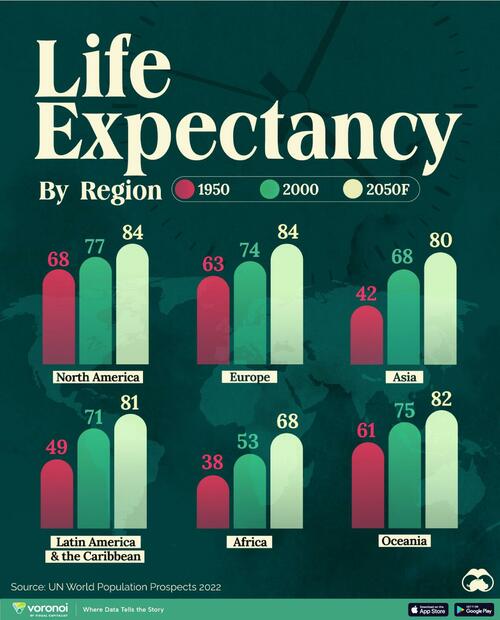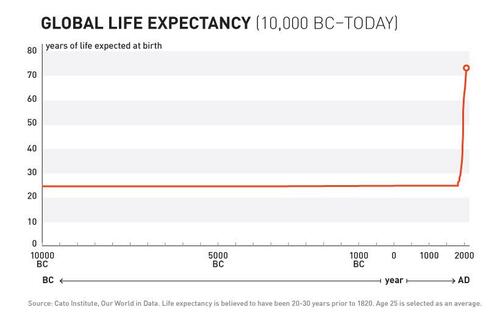
Over the last two centuries there has been significant progress in human health and longevity. Initially, in the early 19th century, life expectancy did not surpass 40 years globally, reflecting harsh conditions like extreme poverty, limited medical care, and poor sanitation. By 1950, this figure had seen notable improvements, especially in regions like Europe, North America, and parts of South America, with averages rising above 60 years. Countries such as Norway boasted a life expectancy of 72 years, while others like Mali lagged at 26 years.
From 1950 to 2000, substantial strides were made particularly in Asia and Latin America, reflecting global efforts to improve health and living standards. According to the UN World Population Prospects 2022, these trends are expected to continue, projecting that by 2050, life expectancy at birth will surpass 80 years in most global regions. This infographic captures these transformative changes, presenting a hopeful outlook on the future of global health.
Visualizing this is Marcus Lu and Bruno Venditti of Visual Capitalist:
Continued:
The improvement in life expectancy can be attributed to various factors such as advancements in medical technology, better healthcare infrastructure, improved sanitation, access to clean water, and increased awareness about health and nutrition.
In Perspective With History
Although today it seems like rising life expectancy is a given, for much of history it’s worth noting that the situation was much more static.
As shown in the above chart, for most of human history life expectancy at birth actually sat in the 20-30 year range. It’s only since the mid-19th century that the aforementioned improvements (sanitation, clean water, etc.) allowed for the exponential and regular progress we see today.
Over the last two centuries there has been significant progress in human health and longevity. Initially, in the early 19th century, life expectancy did not surpass 40 years globally, reflecting harsh conditions like extreme poverty, limited medical care, and poor sanitation. By 1950, this figure had seen notable improvements, especially in regions like Europe, North America, and parts of South America, with averages rising above 60 years. Countries such as Norway boasted a life expectancy of 72 years, while others like Mali lagged at 26 years.
From 1950 to 2000, substantial strides were made particularly in Asia and Latin America, reflecting global efforts to improve health and living standards. According to the UN World Population Prospects 2022, these trends are expected to continue, projecting that by 2050, life expectancy at birth will surpass 80 years in most global regions. This infographic captures these transformative changes, presenting a hopeful outlook on the future of global health.
Visualizing this is Marcus Lu and Bruno Venditti of Visual Capitalist:
Continued:
The improvement in life expectancy can be attributed to various factors such as advancements in medical technology, better healthcare infrastructure, improved sanitation, access to clean water, and increased awareness about health and nutrition.
In Perspective With History
Although today it seems like rising life expectancy is a given, for much of history it’s worth noting that the situation was much more static.
As shown in the above chart, for most of human history life expectancy at birth actually sat in the 20-30 year range. It’s only since the mid-19th century that the aforementioned improvements (sanitation, clean water, etc.) allowed for the exponential and regular progress we see today.
Loading…






